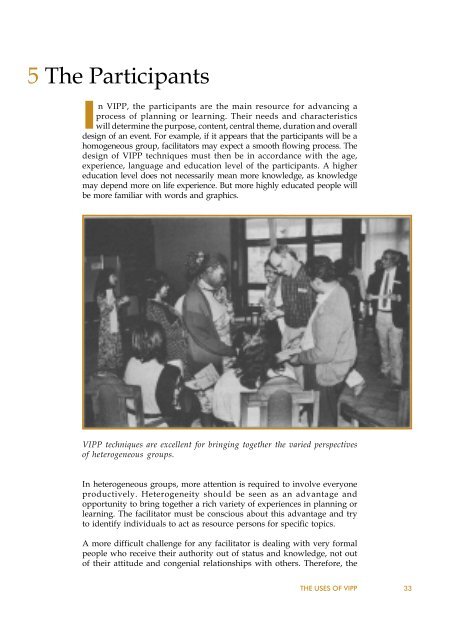VIPP_Unicef
VIPP_Unicef
VIPP_Unicef
You also want an ePaper? Increase the reach of your titles
YUMPU automatically turns print PDFs into web optimized ePapers that Google loves.
5 The Participants<br />
In <strong>VIPP</strong>, the participants are the main resource for advancing a<br />
process of planning or learning. Their needs and characteristics<br />
will determine the purpose, content, central theme, duration and overall<br />
design of an event. For example, if it appears that the participants will be a<br />
homogeneous group, facilitators may expect a smooth flowing process. The<br />
design of <strong>VIPP</strong> techniques must then be in accordance with the age,<br />
experience, language and education level of the participants. A higher<br />
education level does not necessarily mean more knowledge, as knowledge<br />
may depend more on life experience. But more highly educated people will<br />
be more familiar with words and graphics.<br />
<strong>VIPP</strong> techniques are excellent for bringing together the varied perspectives<br />
of heterogeneous groups.<br />
In heterogeneous groups, more attention is required to involve everyone<br />
productively. Heterogeneity should be seen as an advantage and<br />
opportunity to bring together a rich variety of experiences in planning or<br />
learning. The facilitator must be conscious about this advantage and try<br />
to identify individuals to act as resource persons for specific topics.<br />
A more difficult challenge for any facilitator is dealing with very formal<br />
people who receive their authority out of status and knowledge, not out<br />
of their attitude and congenial relationships with others. Therefore, the<br />
THE USES OF <strong>VIPP</strong><br />
33


